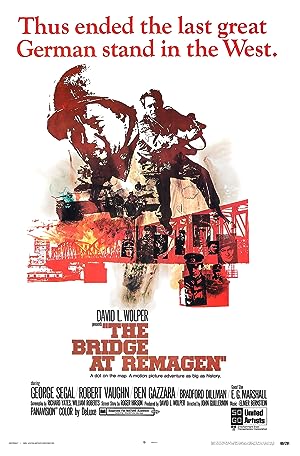Details
The Bridge at Remagen is a compelling war film set during World War II that follows the story of a crucial battle for control over the last remaining bridge across the Rhine River. As the Allied armies edge closer to victory, the Germans face a difficult decision. They contemplate destroying the bridge to hinder their enemy's advance, knowing the consequences that it will also trap their own soldiers on the wrong side. The film builds tension as both sides strategize and prepare for the inevitable clash.
A riveting depiction of true events, The Bridge at Remagen showcases the bravery and determination of soldiers from both sides as they fight for control of the strategic bridge. The film excellently captures the chaos, intensity, and uncertainty of wartime, highlighting the sacrifices made by soldiers and the toll that war takes on individuals.
Featuring an exceptional ensemble cast, including George Segal, Robert Vaughn, and Ben Gazzara, the film delves into the human side of war, portraying the internal conflicts and personal struggles faced by soldiers on and off the battlefield. It explores the moral dilemmas and tough decisions that arise during wartime, adding depth and emotional weight to the story.
With its superb cinematography and realistic battle sequences, The Bridge at Remagen offers an engrossing cinematic experience that combines elements of action, drama, and historical accuracy. This powerful film is a must-watch for history buffs and war movie enthusiasts alike, as it provides a gripping portrayal of a pivotal moment in World War II.
Also Known As:
The Bridge at RemagenRelease Date:
23 Oct 1969Writers:
Richard Yates, William Roberts, Roger O. Hirson

